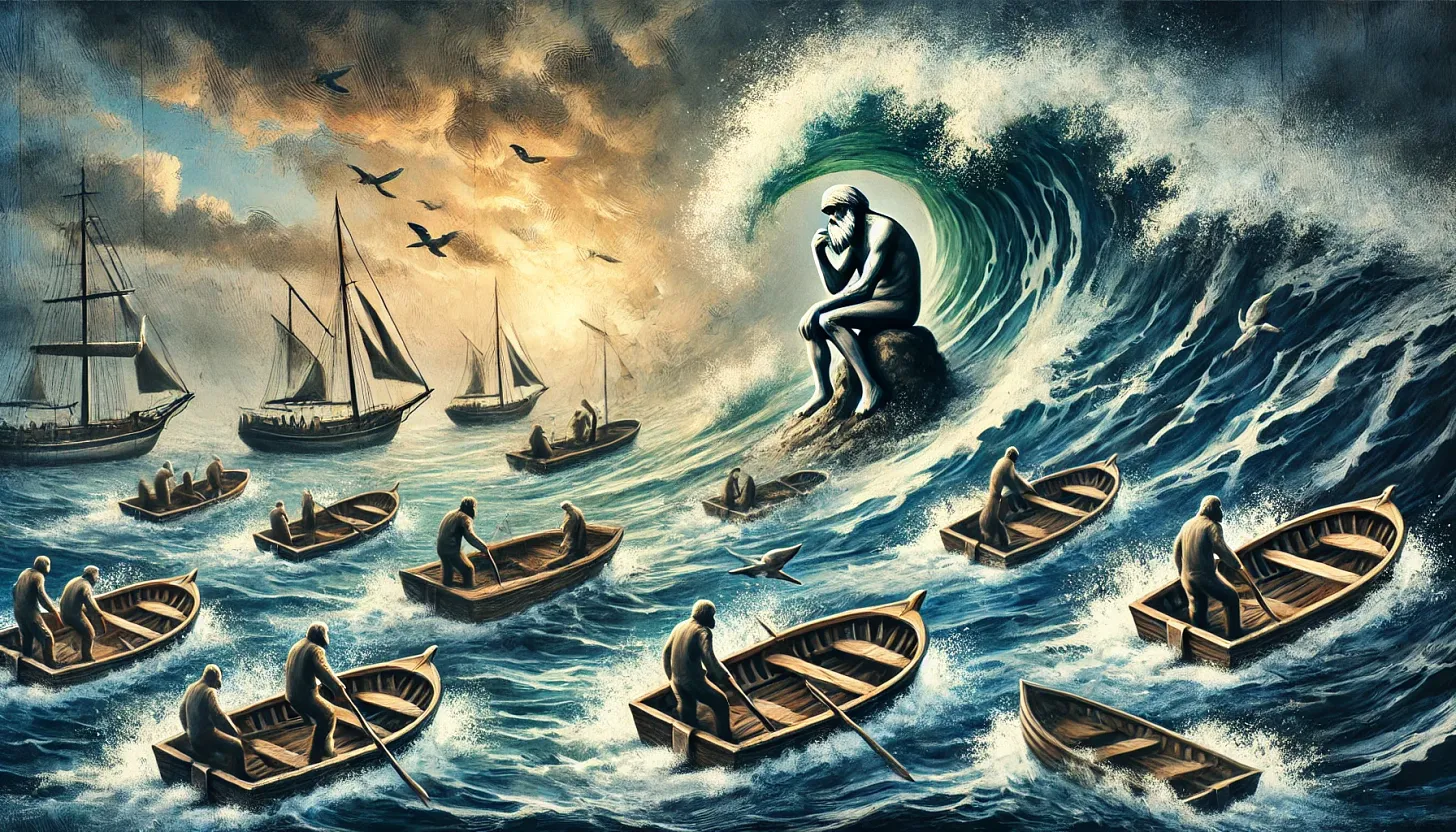In 1859, Charles Darwin introduced his famous theory of evolution by natural selection. He showed that over time, living things change because some have traits that help them survive in their environment better than others. The ones with better traits get more resources and produce more offspring, and this way, their genes pass on to new generations.
Darwin did not know about genes at that time, but he understood that certain characteristics (like neck length in giraffes) are inherited from parents. If an animal’s features help it adapt to its surroundings (like tall trees with leaves at the top), it survives and reproduces. If not, it will slowly disappear. In short, “the fittest” stay alive, and the rest vanish.
Natural Selection and the Environment
One key point is that “fit” depends on environment. A giraffe’s long neck is good in a place where food is high up in trees, but in another place, a long neck might be useless. In the same way, certain traits that help a species survive in one setting may cause them trouble in a different setting.
Survival of Ideas in the Startup World
Something similar happens with new ideas, products, and startups. The startup environment has limited resources like investment funds, talented people, and access to customers. Many ideas seem promising, but they fail if they cannot get enough of these resources or cannot satisfy real market needs. On the other hand, the ones that adapt best to the market usually continue and grow.
From my perspective, the market itself is the biggest test. If your product or service is not desired by enough customers, or it does not solve an important problem, your startup might fail, no matter how great your idea is in theory.
Lean Startup and Product-Market Fit
The Lean Startup approach by Eric Ries introduces an iterative cycle (Build-Measure-Learn). First, you create a simple model of your idea (known as a Minimum Viable Product, or MVP). Then you present it to potential customers to gather feedback. Based on what you learn, you improve the idea. You repeat this cycle many times, and each time your product should become more aligned with the market needs.
This approach is similar to natural selection. Each version of your MVP is tested by the market (environment). Only the versions that are “fittest” for customer needs survive. The bad versions are “selected out.” Over time, this continuous improvement can produce something the market truly wants.
Of course, it’s not just startups that make mistakes, nature also makes mistakes. For example, if nature creates a species of giraffe that cannot start walking and running within one hour after birth, based on natural selection, nature will make sure the baby giraffe will not survive. It is either hunted or left behind by it’s mother.
In innovation projects, if a wrong product is made that is incompatible with the environment (market), it will definitely not survive. Of course, if all paths fail or the startup runs out of money or energy, the project may end.
Fail Fast, Evolve Faster
For instance, let’s suppose you launch a new app for ordering groceries. If you find out customers do not really care about a certain feature, you remove it and add something more useful—just like in nature, where certain traits disappear if they are not helpful for survival.
Role of the Market in Creating Successful Products
There is a famous quote by Émile Chartier (also known as Alain), who said that even ship design follows a kind of natural selection. Badly built ships sink quickly, so no one copies them. Eventually, only the designs that stay afloat are used again and again.
“Every boat is copied from another boat… Let’s reason as follows in the manner of Darwin. It is clear that a very badly made boat will end up at the bottom after one or two voyages, and thus never be copied… One could then say, with complete rigor, that it is the sea herself who fashions the boats, choosing those which function and destroying the others.
This is what happens in business: the market decides which products sink or swim.
Because of that, we say the market “creates” successful products. A startup or product might look brilliant in a PowerPoint presentation, but if real customers do not see value, it will not succeed. On the other hand, a simple solution that solves a genuine pain point might become extremely popular and profitable.
Conclusion
Survival in the startup world is similar to Darwin’s natural selection. A startup that adapts well to market conditions—by testing ideas quickly, learning from failures, and improving rapidly—has a better chance to survive and grow. Bad ideas, or ideas that are not aligned with customer needs, disappear. In other words, it is the market that shapes and perfects products and ideas, just like nature sculpts the traits of living beings over time.
If we learn from the environment (in this case, the market), we can develop stronger, more resilient products. By testing frequently, listening to feedback, and refining our offerings, we increase the chances that our idea stands out and survives in a competitive landscape—until, hopefully, it becomes the next big success story.
I believe that continuously testing, failing, and learning is the best way to ensure your idea evolves quickly. In my experience, those who embrace this process tend to succeed more often than those who assume their first idea is already perfect.


Soheil Abbasi
Innovation Ecosystem Orchestrator | AI Venture Builder | Startup Mentor & Investor